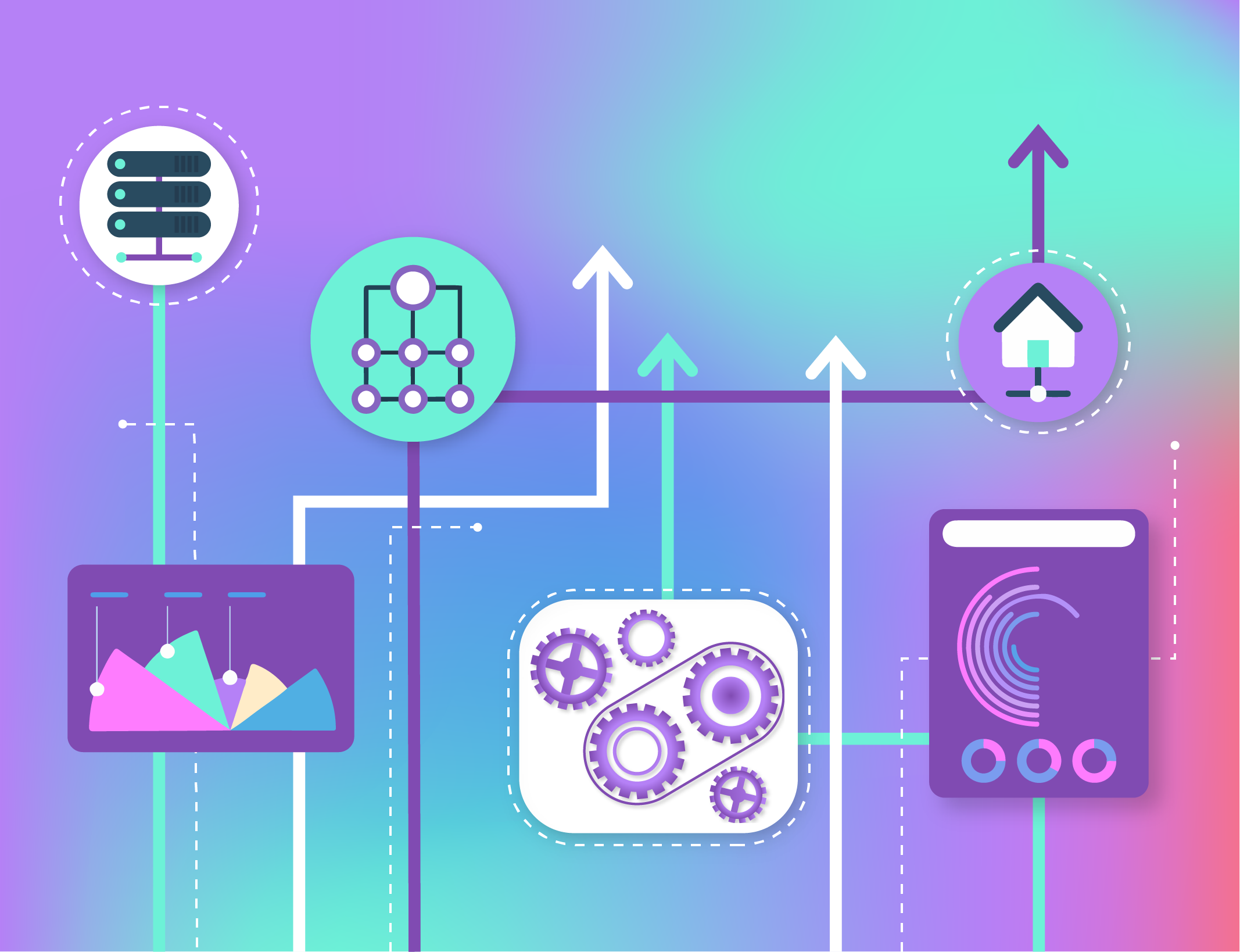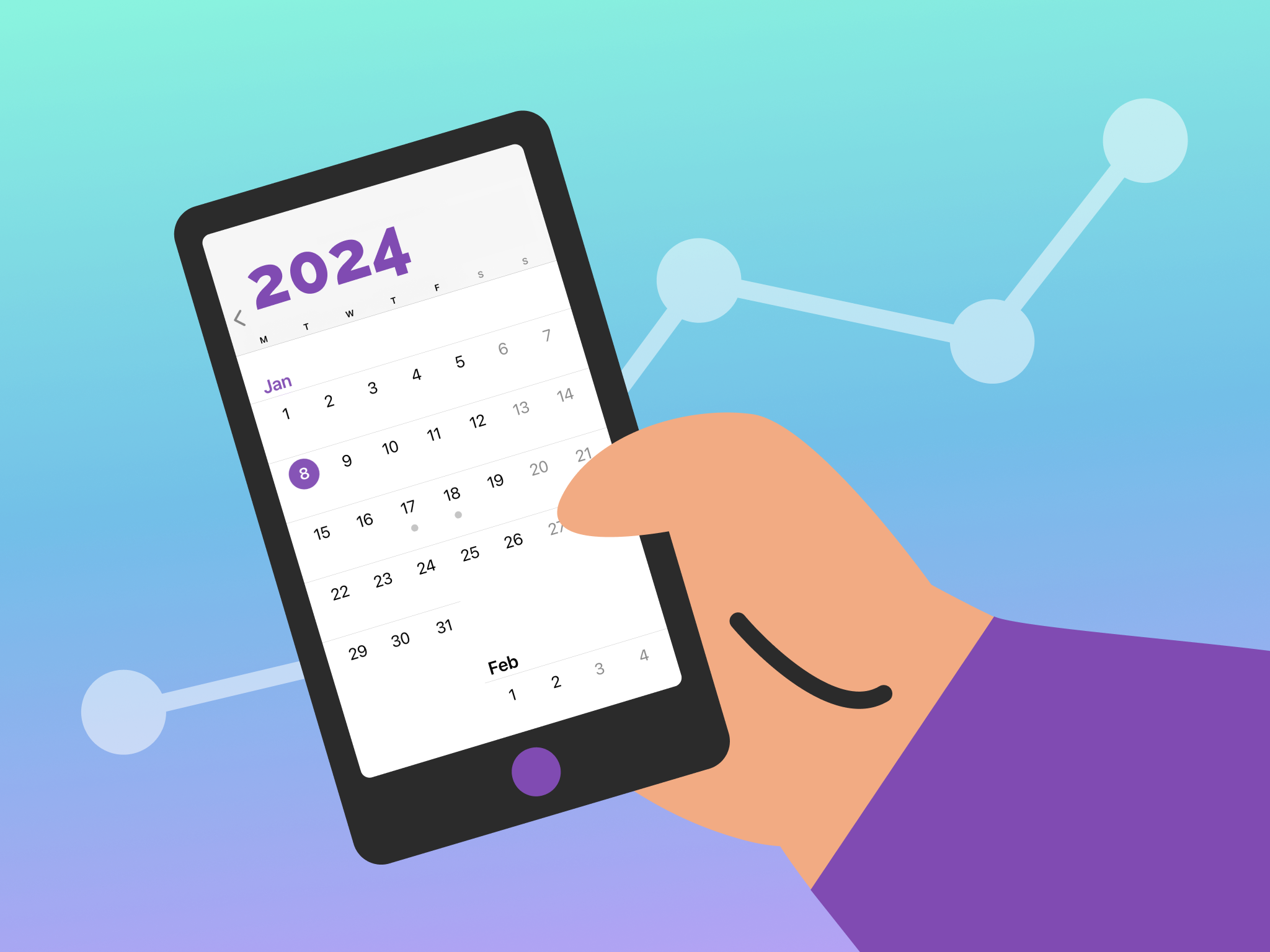Programmatic ads have become a staple of digital advertising thanks to their precision, efficiency, and reach, and programmatic ads accounted for an estimated 91.1% of digital display ad spend in the US in 2023. (Source)
So there’s a good chance your competitors are using programmatic ads as part of their advertising strategy — and you should be, too.
Whether you’re new to programmatic ads or a seasoned pro, it’s essential to stay up-to-date with the latest programmatic ad strategies to make the most effective use of your advertising budget.
This guide will walk you through the exact steps and strategies the Grapeseed Media programmatic experts use to set up and run successful programmatic ad strategies.
What Is a Programmatic Advertising Strategy?
Let’s start with the basics. Programmatic advertising uses algorithms and machine learning to automate the process of buying and selling ad inventory.
With programmatic ads, publishers make ad space available on ad exchanges using a supply-side platform (SSP), and advertisers set up campaigns using demand-side platforms (DSP).
When a user navigates to a website, real-time bidding occurs on the ad placements, and the winning ad is displayed. The whole process takes less than a second, so it doesn’t affect the user experience. This process saves advertisers a ton of time and is highly targeted and efficient.
A programmatic advertising strategy is a set of steps and actions a business takes to harness the potential of programmatic ads. This could be as simple as a single campaign for a single product or a more complex retargeting campaign aimed at different audience segments.
The best programmatic advertising strategy for your business will depend on many factors, including what product or service you’re selling, who your target audience is, and what your business goals are.
What Are the 4 Main Components of Programmatic?
1. DSPs
A DSP, or demand-side platform, is a type of adtech software that advertisers use to automate the buying of digital ad inventory.
It allows advertisers to manage multiple ad exchange and data exchange accounts through one interface and optimize the purchasing of display, video, audio, CTV, and digital out-of-home ads based on a set of targeting parameters.
2. SSPs
An SSP, or supply-side platform, is a platform publishers use to manage, sell, and optimize available inventory in real-time to maximize revenue from digital advertising.
It connects publishers to multiple ad exchanges, DSPs, and networks, allowing them to efficiently match their ad space with advertiser demand.
3. Ad exchanges
An ad exchange is a digital marketplace that enables advertisers and publishers to buy and sell advertising space, typically through real-time bidding (RTB).
This platform facilitates the trading of media advertising inventory from multiple ad networks, allowing prices to be set through a dynamic auction process.
4. DMPs
A DMP, or data management platform, is a centralized system that collects, organizes, and manages large sets of structured and unstructured data from various sources, including first-party data.
It enables advertisers and marketers to create targeted segments for more personalized and efficient advertising campaigns.
The Fundamental Pillars of Every Programmatic Ad Strategy
There’s no one-size-fits-all approach to designing your programmatic marketing campaigns, but the following pillars will serve as a guide and foundation as you plan your strategy.
Set Your Campaign Goals
The poet Bill Copeland said, “The trouble with not having a goal is that you can spend your life running up and down the field and never score.” The same goes for any ad campaign, we want success, we want to score, but how can we score without a goal? So, every successful campaign should start with clear, realistic, measurable goals.
Ask yourself what you want to achieve with your campaign. Is it to increase brand awareness? Drive more website traffic or sales? Lower your cost per user acquisition? Knowing the answers to these questions will inform your campaign strategy.
It’s also important to take into account your budget at this stage, so you know exactly how much you have to spend and can plan your campaign accordingly. However, you should also have a certain amount of flexibility to allow you to update your campaign as new data comes in.
Choose Your Target Audience
The target audience depends directly on your campaign goals. Now that third-party cookies are being phased out, it’s essential to collect first-party data from your customers and buy second-party data from reliable sources, such as Amazon DSP.
You can also use strategies like contextual targeting and universal IDs (UIDs) to target users with personalized messages while still respecting their privacy.
Mapping the customer journey is also a good way to identify your target audience, especially when you think about segmentation. A customer who is new to your brand will need more nurturing and a different journey than someone who’s already familiar with your products.
Finally, segment your target audiences so that you can serve them the most relevant ads that will help move them along your funnel.
Decide on Your KPIs
Deciding what metrics to measure will again depend on your campaign goals. For example, if your goal is to raise brand awareness, relevant KPIs might include page visits, video completion rates, and other engagement-centric measurements.
If your goal is to drive more sales, likely conversions and return-on-ad-spend (ROAS) will be your main KPIs. It is ok, and even encouraged, to have primary and secondary KPIs, but make sure to choose your primary KPI carefully as that is the one most optimizations will be based on.
Choose your Channel Mix
Once you’ve set your KPIs, it is important to align your media mix with channels that best support those KPIs.
For example, let’s consider native and SEE (Social Extension Everywhere) are better for engagement; a heavy amount of spend in retargeting is better for conversations, while campaigns that are trying to introduce more awareness can afford to spend more time reaching new audiences and be on channels like CTV and pDOOH.
In a well rounded campaign, you’ll ideally choose channels that support a full-funnel approach— raising awareness, encouraging consideration, and then closing the sale or achieving the user action in the final conversion phase.
Select Your Creative Formats
Programmatic campaigns aren’t just limited to display advertising (although display remains one of the most popular and ubiquitous formats). Other digital advertising formats include:
The most effective formats for your programmatic campaigns will depend on your goals, target audience, and KPIs.
Whenever feasible, try to include a variety of channels in your strategy. Doing so can help fend off ad blindness, and make it easier to reach out and engage more people in multiple ways. Moreover, by diversifying the delivery of your message to target audiences, you can ensure that it smoothly integrates into their daily lives.
Choose the Best DSP for Your Needs
Some DSPs are focused on specific channels and formats, while others might offer a more flexible approach, so again, you should base your decision on your campaign goals and target audience.
A good DSP will support most creative formats and provide things like transparent real-time access to data, several targeting options, and tech support.
For instance, if you’re looking to prioritize access to robust second-party data regarding an audience’s online shopping behaviors, Amazon’s DSP is a great choice. This advanced platform offers a wealth of reliable data on customers.
All of this aside, one of the most important factors in choosing a DSP is ensuring that you understand how to use all its features and functionality to your advantage. Therefore, it may be worth opting for an easier–to–use DSP, even if it offers fewer robust features.
For example, at Grapeseed Media, while we typically work on an advanced platform like The Trade Desk as one of our go–tos, a simpler DSP such as StackAdapt can be good option for those new to programmatic; it still provides plenty of options while being much more user–friendly.
Determine Ad Scale and Frequency
Advertisers should work with their programmatic partners to identify optimal scales and frequencies for their strategies.
This includes implementing frequency capping, which limits the number of times an ad is shown to the same user across your whole marketing ecosystem.
Different combinations of reach and frequency suit different advertising strategies. For instance, if you’re engaging in a retargeting campaign, you want a frequency of several times a day. Prospecting, on the other hand, only needs 1–2 ads in total.
One challenge that traditional walled-garden environments like social and direct buys pose is the lack of global frequency capping—meaning you can’t control the frequency of ads shown to the user throughout their digital journey across all channels. The ability to frequency-cap without being limited to a single channel is a significant benefit of programmatic advertising.
Protect Your Brand Safety
Without taking due precautions, ads can end up on inappropriate platforms, so to protect brand safety, you should verify that your chosen DSP only works with reliable and authorized publishers.
This is where questions around whitelists and blacklists are best considered: to put it simply, whitelists will show you a list of acceptable sites on which to run inventory (all others prohibited), while a blacklist denotes those sites where inventory is not to serve, ever. You can create your own or use a third party to do the due diligence for you at both the domain and page level.
Brand safety also deals with questions around contextual targeting. You want to ensure that your ads are shown on websites containing relevant, contextually accurate content. Brand safety tools such as DoubleVerify can help here, ensuring that online advertising is shown to real, physical users in the intended geographical area, in contexts that are aligned with your brand identity and sensitivities.
Speaking of brand sensitivities, you also want to refine the places where your ads are shown through keyword contextual targeting, such as using negative keywords to prevent your ad from appearing in certain articles.
For example, let‘s say you’re a recently launched personal finance app; you might want to refrain from placing an ad on an article talking about the collapse of the crypto exchange FTX. You could solve this by instructing the DSP (demand–side platform) not to bid on any ad units that sit within articles referencing FTX.
Potential Challenges and How to Address Them
Programmatic advertising is a powerful tool that can help any business grow — but you have to know how to harness that power and avoid any potential pitfalls. Here are two to look out for.
Ad Fraud
When you run an ad, you want it to be seen by actual people who may convert to customers — these are known as impressions. But sometimes, your ad is seen by a bot rather than a human. All this does is eat up your budget and make that impression worthless. This is known as ad fraud.
One way to combat ad fraud is to partner with programmatic experts who can ensure your ads are only shown on reliable and trustworthy platforms and networks. Grapeseed Media uses partners like DoubleVerify who ensure that placements that have been identified as running in browsers controlled by nonhuman bots or from invalid traffic sources (nonhuman data center traffic, hijacked device, or mobile emulator), will be excluded.
Lack of Knowledge
Although many businesses are now using programmatic, with so many platforms and options to choose from, getting started with a new campaign can sometimes be overwhelming.
Several DSPs offer relevant courses and certification programs to help you upskill and educate yourself, and there are even third parties like General Assembly that provide classes.
This is another reason to partner with trusted programmatic experts like Grapeseed, who know how to expertly craft tailor-made programmatic campaigns to suit your needs and goals.
Grapeseed also offers free consultations for any advertising and programmatic questions you might have—even if you aren’t partnering with us. Reach out to me, or anyone on our team and we’ll be happy to field your questions.
Programmatic Advertising Strategy Examples
So, how does all of this translate into real-world campaigns? If you’re looking for inspiration, take a peek at two strategies the Grapeseed Media team designed for our clients Oscar de la Renta and Grand Hyatt New York.
Oscar de la Renta
Luxury fashion brand Oscar de la Renta came to us looking for creative, strategic audience segmentation that would go beyond basic retargeting strategies to boost brand awareness, website traffic, and sales.
Our strategy was to identify and target relevant audiences, including:
- Showing ads to users who have demonstrated a strong interest in high-end fashion, luxury CPGs, brand names, five-star travel, and luxury vehicles.
- Leveraging audience data from various sources including Mastercard, Amazon and Google.
- Targeting exclusively women ages 28 – 45 with a household income of over $250k, privileging visibility on high-end publishers such as Vogue, Vanity Fair, Wall Street Journal and the New York Times.
- Executing dynamic retargeting through relevant messaging based on users’ browsing history and products viewed.
This approach led to:
- 1,712% return on ad spend
- 36% increase in website traffic
- 11% increase in branded search terms
Grand Hyatt New York
In 2016, Grand Hyatt New York was looking for ways to increase return on ad spend (ROAS) and boost the hotel’s revenue.
We took the following approach to helping them achieve this:
- Showing messages to users who are currently and actively searching for and engaging with Google search results.
- Targeting users based on their travel patterns to New York using data from organizations such as Hertz and American Airlines.
- Targeting high-funnel audiences in the trip planning phase of their customer journey with paced reminders during this crucial period of impression.
Our strategy delivered the following results:
- $1,647,787 in total revenue during nine months with Grapeseed, compared to $614,902 in total revenue during nine months with a previous agency.
- 1,017% return on ad spend compared to 380% return on ad spend with the previous agency.
- 3,205 Facebook page likes, representing 56% of total page likes generated during the 9-month period.
- $275 average daily rate — $12 higher than the overall average.
- 2.5x more room nights generated via Hyatt.com (5,999 vs 2,379 with the previous agency).
Get Ahead with Your Programmatic Strategy
Programmatic advertising has huge potential to help you grow your business through effective, efficient, and highly-targeted campaigns.
However, creating a winning programmatic advertising strategy is not for the faint of heart. It requires an in-depth knowledge of adtech and practical know-how to put the plan into action.
Here at Grapeseed, our team of programmatic experts creates bespoke programmatic digital advertising campaigns for businesses just like yours.
Get in touch with us to learn more about how we can help you plan and execute your programmatic advertising strategy.






